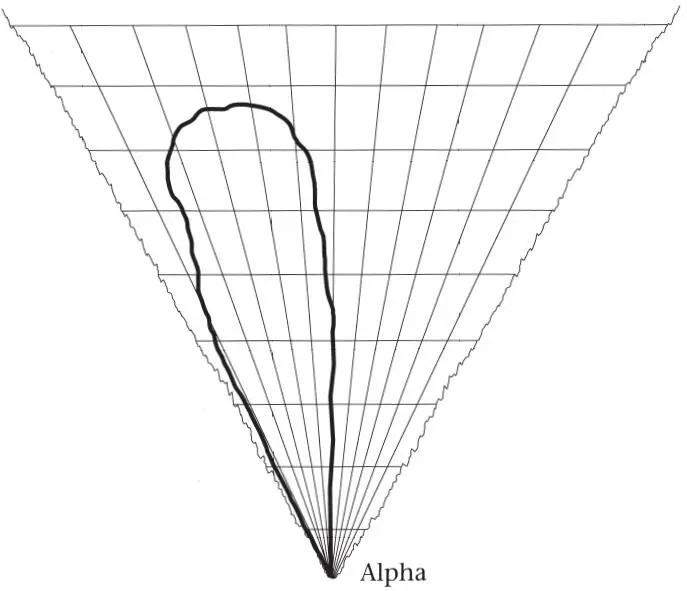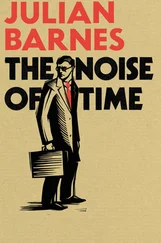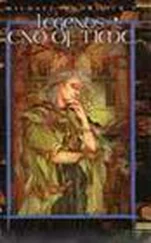Currently there is no fully satisfactory thermodynamics of cosmology, mainly because of the way in which gravity acts. But it does seem certain that black holes, which almost certainly exist, have a well-defined entropy associated with them. This was the final and most dramatic outcome of the intensely exciting ‘golden decade’ in the study of black holes that ended with the discovery of black-hole evaporation by Stephen Hawking in 1974. This fascinating story has been told with great verve by Kip Thorne in his Black Holes and Time Warps . The entropy associated with black holes is staggeringly large. Since there is little evidence that black holes existed at very early times but a lot that many have since been formed and more will be formed, the universe seems to have begun in an extraordinarily unlikely state.
No one has done more than Roger Penrose to highlight this fact. His The Emperor’s New Mind has an entertaining illustration of the creating divinity seeking with a pin to find the tiny improbable point of the initial condition of the universe from which its utterly unlikely history must have sprung. Penrose seeks to explain this in a theory in which both time and actual quantum-mechanical collapse are real, and the laws of nature are inherently asymmetric in time. My approach is quite different because I think that the whole problem of time and its arrow can – paradoxically – be formulated more precisely and transparently in a context in which time does not exist at all. I also believe that, far from being highly unlikely, the kind of history and cosmos we experience are characteristic and likely in a timeless scenario.
It all depends on how a static wave function ‘beds down’ on the starkly asymmetric continent of Platonia. The issue of the correct arena is all-important. The collective intuition of most physicists, wedded to time and honed on translucent structures like absolute space, is forced to see the observed universe as highly improbable. But in Platonia it may appear inevitable. Wave functions have a way of finding special structures: for example, they can create complex molecules like proteins and DNA.
Let it be granted, not unreasonably I think, that the wave function of the universe will be semiclassical with respect to at least some variables in some part of Platonia. Where is it likely to be, and how will the corresponding Hamiltonian ‘light rays’ run? Do they emerge from Alpha? Here, one of the most famous results of classical general relativity may be relevant. Penrose and Hawking showed that its solutions have a remarkable propensity to evolve into a singular state. All that is necessary is for sufficient matter to be concentrated within a certain finite region. After that, as Penrose showed, collapse to a black hole is inevitable. Hawking showed that there is a sense in which the Big Bang itself can be regarded as the time-reverse of the Penrose collapse to a black hole. (Collapse here has nothing to do with quantum-mechanical collapse of the wave function.) Solutions that terminate at one or both ends in singular states are characteristic of general relativity.
What happens in a quantum theory cannot be totally unrelated to the corresponding classical theory. It therefore seems likely that in quantum gravity there will be a semiclassical region near the central ray in Figure 55. The Hamiltonian ‘light rays’ in it may well, reflecting the structure of Platonia, appear to emanate from Alpha, and rise up in a kind of jet which then spreads out and falls back, as in a fountain, returning to small volumes but in a much more irregular state. Alternatively, they may go on for ever, receding ever farther from Alpha. I have described these trajectories as if they were traced in time, but they are only paths.
Moreover, the paths are still only ‘seeds’. The finding of the full rich structures which tell us so insistently that time exists and flows must result from entanglement with the host of the remaining quantum variables that constitute the expanses of Platonia. When discussing alpha-particle tracks, I emphasized that Mott employed a special device to concentrate the wave function on time capsules. Considered purely in terms of the stationary Schrödinger equation, this was artificial. This is what created the static alpha-particle tracks and such a strong sense of time and history out of the ‘seed’ of a spherical wave pattern.
If my proposal is along the right lines, there must be some natural and plausible mechanism within static quantum cosmology which performs this task. Platonia at large must force it to happen. As I have already said, I see the cause in the rooted asymmetry of contingent things. Platonia is necessarily skew. It is easy to imagine that the cone of Figure 55 ‘funnels entanglement outwards’, much as a trumpeter blows air from a bugle. I deliberately chose this last simile. The bugle does create a nice image of what I have in mind, but it also creates hot air. There are no hard mathematical proofs to support my idea, but I hope you are now persuaded that at least the arguments for a timeless universe are strong. If it nevertheless appears intensely temporal, there must somewhere be a massive reason for the fact. I think it is the asymmetry of being. Being can be more or less. Sitting in the midst of things, we feel ourselves carried forward on the mighty arrow of time. But it is an arrow that does not move. It is simply an arrow that points from the simple to the complex, from less to more, most fundamentally of all from nothing to something. If we could look over our shoulder in Platonia, we should see where this trek began: at the edge of nothing.

Figure 55.Explosion out of the Big Bang and recontraction to the Big Crunch according to present standard cosmology.
A WELL-ORDERED COSMOS?
Let me end the main part of the book with a few comments on structure, and what strikes a theoretical physicist as improbable. If we think that dynamical histories in space and time are the fundamental things in nature, then all statistical reflections on the world lead to great difficulties. Most histories are unutterably boring over all but a minuscule fraction of their length. We can never understand the miracle of the structured world. Things are completely changed if quantum cosmology is really about some well-behaved distribution of a static wave function over Platonia. The configurations at which ψ collects strongly must be special – in some sense they must resonate with all the other configurations that are competing for wave function. Quantum cosmology becomes a kind of beauty contest in eternity. The winners – those that get a high probability density – must be exceptional, like the DNA molecule. This is just the opposite of what classical physics leads us to expect. There, the winners are boring.
When I wrote my book on the history of dynamics, I was exposed to the beautiful poetic notion of the well-ordered cosmos. Intermittent reading of Leibniz had already made me deeply interested in structure, and this was greatly strengthened by my collaboration with Lee Smolin on the Leibnizian idea that the actual universe is more varied than any other conceivable universe. That still remains a mere idea (though Paul Davies was sufficiently intrigued to include a brief account of the idea in his The Mind of God ), but I became persuaded that a scientific theory of the universe in which structure is created as a first principle is possible. We may need to get back to the wonder of childhood to comprehend what the world really is. Yeats once wrote of Bishop Berkeley that he ‘has brought back to us the world that only exists because it shines and sounds. A child, smothering its laughter because the elders are standing around, has opened once more the great box of toys.’
Читать дальше













